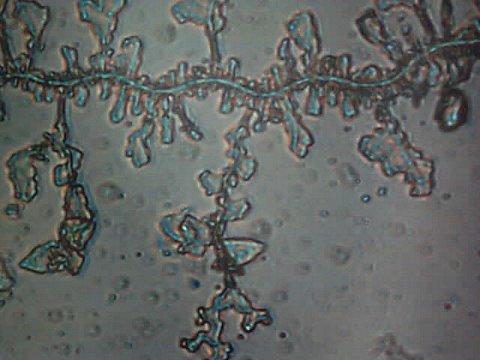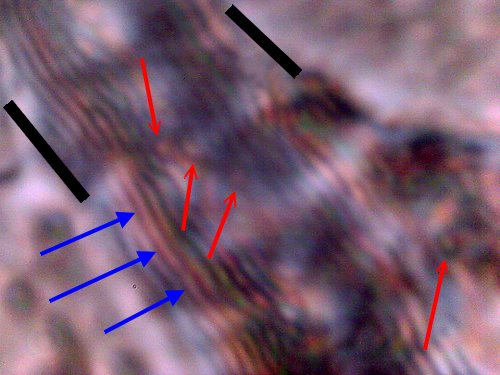
MORGELLONS: 5th, 6th & 7th MATCH
At this point, there are three more samples added to the research of Morgellon's that are showing the same basic apparent pathogenic forms as those previously observed. Added to this list of samples researched are: 1) the 5th match of this observation match set showing that an individual not outwardly manifesting Morgellon's symptoms can demonstrate the internal Morgellon's symptoms of blood disturbance and Chlamydia-like form - this individual, in images of a gum-dental infectious sample shows a 'hybrid' form not seen before...that is, both oblate and fibrous forms appear in the same sample; 2) the 6th sample shows a unique characteristic not seen yet - that is, that the filament, as opposed to encasing a sub-micron fibrous network, instead encases the Chlamydia-like organisms, demonstrating that a real possibility is taking place where there is morphing between all three reported forms in individuals. This subject's samples support the possibility that an individual not outwardly manifesting Morgellon's symptoms can demonstrate the Morgellon's symptoms of anomalous fibrous form; and 3) the 7th sampled individual's saliva sample has a highly abnormal mucous that this individual notices reacts to ultraviolet radiation. This sample shows that detected Chlamydia-like structures, filamentous and hybrid forms are being detected across major systems of the human body, including circulatory, digestive and skin.




